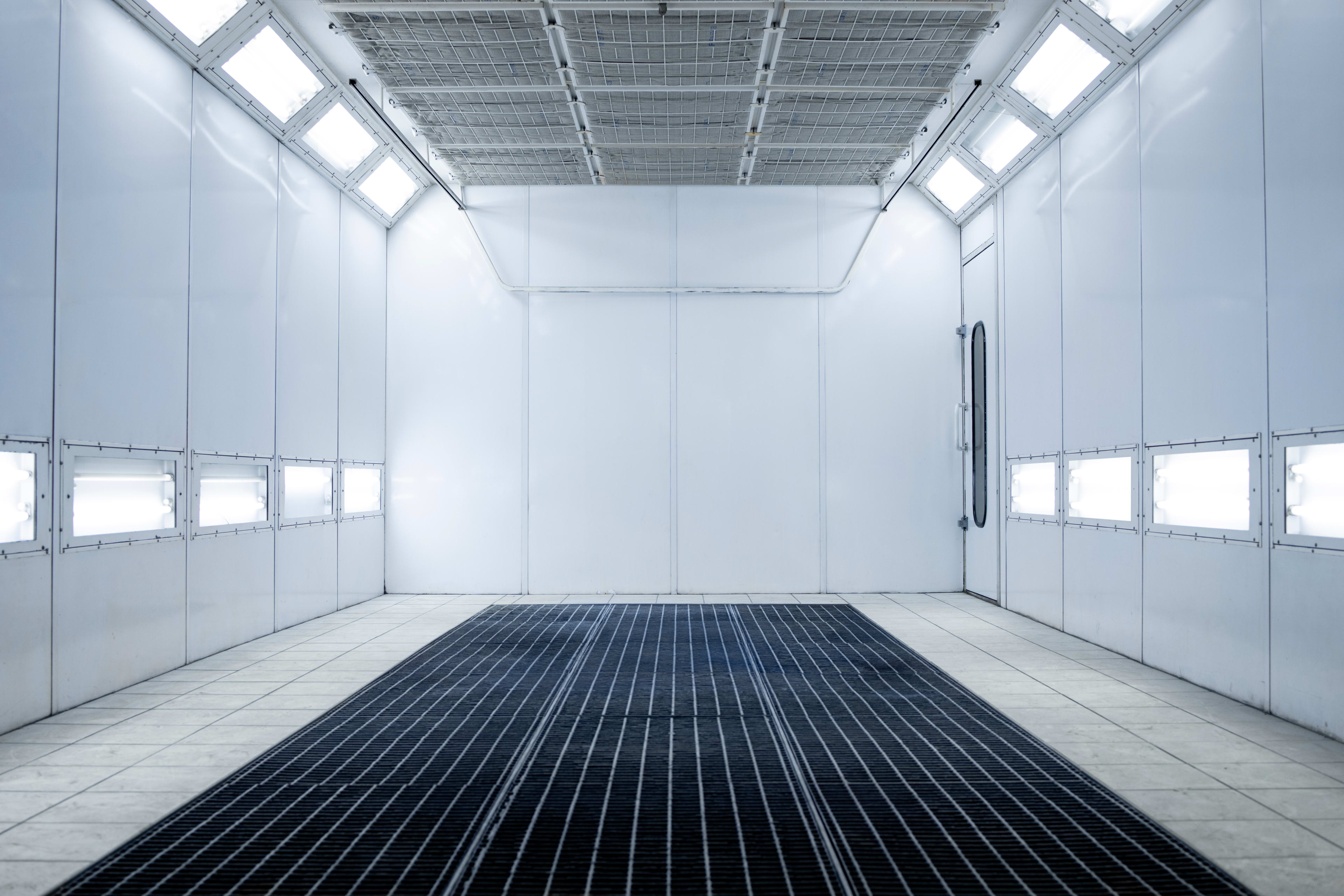Spray Painting Safety

If your work in a shop involves spray painting, there are significant hazards you should know about so you can mitigate them. Paint sprays can cause harm for two reasons: they contain hazardous chemicals and they're highly flammable.
Chemical and fire hazards of spray painting
According to the CDC, the chemicals in paint sprays have been linked to a number of health issues. These include include skin and eye irritation, nervous disorders, and respiratory illnesses including reduced lung function.
Some of these chemicals are also highly flammable. Tools that create sparks must be kept a safe distance away from spray booths. This includes drills, grinders, sanders, and any other tool that has the possibility of creating sparks.
It's a good idea to keep spray painting equipment within the area of the spray booth. This equipment can contain enough paint, or be coated with enough residue, to be a fire hazard while moving around the shop.
Spray booth ventilation
A key tool for mitigating the risks of spray painting is the ventilation system. Ventilation helps remove the chemicals that would otherwise accumulate in the air at dangerous levels. A downdraft ventilation system is preferable to a cross draft or semi-downdraft system because the former is more effective at removing spray paint fumes.
Downdraft systems aren't the cheapest up front, but the airflow is significantly improved over other types of systems. According to Global Finishing Solutions, these are the best systems for reducing fumes in the shop environment.

Preferred equipment
The type of spray gun you use makes a difference. The EPA recommends that you choose a high-volume low-pressure (HVLP) spray gun if possible.
Compared to gravity or siphon-feed guns, HVLP guns can reduce paint overspray by as much as 50%. That's because they're more efficient in their design, allowing you to reduce paint usage and minimize hazardous fumes.
Protective clothing and gear
You should never work in a spray booth without the appropriate Personal Protective Equipment (PPE). This includes a respirator, safety glasses, work gloves, and protective clothing. The entire surface area of your skin should be covered, and your equipment should be rated for professional use.
The respirator is a critical tool when spray painting, and it's important to use it correctly:
- You should receive training in the proper use of a respirator as well as how to remove it.
- The relevant Safety Data Sheet (SDS) will tell you what type of respirator you need to use.
- For cartridge respirators, double check that you're using the right cartridge. For air-supplied respirators, check the tank first to ensure that you won't run out of air.
- Inspect the respirator for damage before using it.
- When you're done working, clean and store the respirator according to the manufacturer's instructions.

Filling up spray paint equipment
Since it involves transferring flammable liquids from bulk containers, filling up your equipment carries a certain amount of risk. There are two key points to remember. First, you should only transfer the liquids in red color-coded containers. Second, follow a grounding and bonding process, the requirements for which are set forth by both OSHA and the .
Grounding and bonding
This process helps eliminate the buildup of static electricity between the dispensing container and the receiving container by allowing it to safely dissipate into the ground.
First, attach one grounding wire clip to the rim of the dispensing container, and then attach the other clip to a grounding source (for example, a steel stake driven into the ground). Take a bonding wire and attach one end to the rim of the dispensing container and the other end to the rim of the receiving container.
When the spray painting container is full, firmly secure the lid of the dispensing container and remove the bonding wire. Return the dispensing container to the flammable materials storage cabinet where it should stay when it's not in use.
This video by Chemscape Safety Technologies goes into more detail on the science behind grounding and bonding: